Electronic Cigarette Use Scale:Development and evaluation of a measure among Chinese students
Jian-Rong Mai*,He-Wei Min,Li-Na Lin,Ling Zhou,Qin-Yi Guan
1School of Nursing,Guangzhou Xinhua University,Guangzhou,China.2School of Public Health,Peking University,Beijing,China.
Abstract
Objective:To develop the Electronic Cigarette Use Scale(ECUS)based on social cognitive theory and test its reliability and validity,so as to provide a scientific tool for evaluating the use of e-cigarette smokers in China.
Methods:Based on the review of social cognitive theory and literature analysis,the item pool of ECUS was constructed to form the initial version.From January to March in 2022,using the convenient sampling method,electronic questionnaires were distributed to college students in Guangdong Province through the questionnaire star platform,and a total of 1047 valid questionnaires were collected for item screening.The total sample was randomly divided into sample 1(n=517)and sample 2(n=530)for Exploratory Factor Analysis(EFA)and Confirmatory Factor Analysis(CFA)respectively to further test the reliability and validity of the scale and finally form a 24-item scale.
Results:The formal ECUS included 24 items,6 factors were extracted by EFA,and the cumulative explanatory variance was 72.774%.CFA showed that the goodness-of-fit indices were acceptable:χ2/df=2.61,CFI=0.938,TLI=0.928,RMSEA=0.055,90%CI(0.050,0.061),SRMR=0.046,AIC=34694.405,BIC=35036.235.The Cronbach’s α of the 24-item scale was 0.898,and the Cronbach’s α of each dimension was between 0.839 and 0.954.Both convergent validity and discriminant validity reached the standard.
Conclusion:The 24-item ECUS developed in this study has been tested with good reliability and validity and is suitable for evaluating the use of e-cigarette smokers in China.
Keywords:Social cognitive theory,Electronic cigarette,Reliability,Validity,Scale
Introduction
The World Health Organization points out that there are more than 8 million deaths caused by tobacco consumption every year,and tobacco consumption has become one of the public health issues of global concern[1].As early as 2001,some scholars predicted that the annual death toll caused by tobacco consumption would reach 10 million from 2020 to 2030[2].Tobacco not only causes various diseases,including“cancer,heart disease,stroke,lung diseases,diabetes,and chronic obstructive pulmonary disease”,but also tobacco users had significantly poorer mental health(psychological distress)as compared to non-tobacco users.Therefore,in recent years,some countries have been carrying out various norms of tobacco control actions[3-5].
Electronic cigarette,also known as "electronic nicotine delivery system",is a device that uses battery as energy and gasifies nicotine by heating tobacco liquid.It was originally invented as a safer alternative smoking tool to help users quit smoking[6,7].However,some studies have shown that e-cigarettes do not have the function of quitting smoking and do harm to health[8-12].In addition,Schoren et al.[13]pointed out that most e-cigarette users were traditional cigarette users,which means that e-cigarette users were more likely to use traditional cigarettes at the same time.At present,the prevalence rate of e-cigarettes is relatively high.2.06 million teenagers in the United States used e-cigarettes in 2021,14.1% of students in the Asia-Pacific region had used e-cigarettes,and nearly 1/4 of China's 10477 young people indicated that they had used e-cigarettes[14-16].China is not only the place of origin of e-cigarettes but also the main producing area of e-cigarettes in the world.However,at present,the domestic control measures on e-cigarettes are still in the exploratory stage and there is no unified scale for the use of e-cigarettes.Therefore,the present study will develop an Electronic Cigarette Use Scale(ECUS)that provide relevant departments and scholars with tools to investigate the use of e-cigarettes,so as to facilitate the relevant parts to obtain e-cigarette use data more conveniently.
Social Cognitive Theory(SCT)is a theory put forward by American psychologist Albert Bandura in 1960s,which can be used to explain health behavior[17].The intention to smoke is determined by an individual's cognitive level related to smoking,such as self-efficacy and attitude[18].The core of SCT is self-efficacy,which considered to be an important part of the smoking behavior change[19].In this study,self-efficacy refers to an individual's confidence in his/her ability to refuse or not to use e-cigarette.The theory also points out that the physical activity is influenced by outcome expectation,perceived facilitator and perceived impediments[20-22].SCT is widely used in various research,especially in the research of health promotion.The dimension of self-efficacy can clearly explain the cause and purpose of individual behavior change.In addition,the theory also shows that the change of individual behavior needs to take into account environmental factors and the influence of knowledge[23-25].In summary,our study aims to develop the ECUS based on SCT,and tested the reliability and validity of the formal scale.
Participants and methods
The development of ECUS
The establishment of the research group.There are 6 members in the group,including 1 professor engaged in health education,2 public health lecturers,1 medical education lecturer,1 doctoral student and 1 master degree student in health education.
The theoretical basis of the scale.Based on the study of the literatures of SCT,and combined with the suggestions of experts in the field of health education,our study construct a design framework including individual factors,environmental factors and behavior intention,and sort out the elements in the framework.
Individual factors include knowledge and self-efficacy on the health impact of electronic cigarettes.Environmental factors refer to the impact of social environment and family environment on individual use of electronic cigarettes.Outcome expectation refers to various objective and subjective feelings of individuals to the outside world after using electronic cigarettes.Behavioral intention refers to the combination of many factors to judge the possibility of individuals using electronic cigarettes in the coming year.Based on SCT,the framework includes five dimensions:knowledge,self-efficacy,environmental factors,outcome expectation and behavior intention.Item pool.In this study,under the guidance of SCT theoretical framework,the item pool is composed of 5 dimensions:knowledge(7 items),self-efficacy(6 items),environmental factors(11 items),outcome expectation(4 items)and behavior intention(1 item).The scale is rated on a 7-point Likert scale ranging from 1(Strongly disagree)to 7(Strongly agree).For example,participants were asked to indicate their opinion on“Electronic cigarettes are harmful to my health.”Item 29 is behavioral intention,and the option is "yes" or "no",so it does not participate in item screening,Exploratory Factor Analysis(EFA)and Confirmatory Factor Analysis(CFA).The higher the score,the less likely participants are to use e-cigarettes.
Testing ECUS
From January to March in 2022,using the convenient sampling method,electronic questionnaires were distributed to college students in Guangdong Province through the questionnaire star platform,and a total of 1047 valid questionnaires were collected for item screening.
Statistical analyses
IBM SPSS version 25 and Mplus 8.0 software were used for statistical analysis.The categorical data were described by frequency and percentage,and the continuous data were described by(xˉ±s).Effective response rate,correlation coefficient,Cronbach's α,coefficient of variation(CV)and factor analysis were used to screen and analyze items.In this study,item was considered to delete which met 3 or more of the following the criterion:1)The effective response rate was less than 80%.2)The correlation coefficient(r)between each item and the total score was less than 0.4(r<0.4)or P>0.05.3)The Cronbach’s α would increase when one item was deleted.4)The coefficient of variation was less than 25%.5)The factor contained only one item or the factor loading was less than 0.4.
Structural equation model was used to evaluate construction validity,convergent validity and discrimination validity.Using the random number generator of IBM SPSS version 25,the total sample(n=1047)was randomly divided into two samples.Sample 1(n=517)was used for EFA,and sample 2(n=530)was used for CFA.Chi-square test and t-test are used to test whether there are differences between two samples.
First,the normality test was carried out on the data of sample 1,and the result showed that the data was skewed distribution,so the Unweighted Least Squares method was selected to extract the factors in the EFA[26].The Kaiser Meyer Olkin(KMO)and Bartlett’s sphericity were used to assess the factorial structures.Both a KMO value larger than 0.60 and a significant χ2test were indicated a fitness structure.Exploratory factors were extracted based on Eigenvalues larger than 1.Item would delete if the factor loading was less than 0.30.
Second,sample 2 was used for CFA.Because the previous normality test results showed that the data was skewed distribution,the robust maximum likelihood estimation(MLM)is selected to evaluate fitness of the model.Fit indices including χ2/df,comparative fit index(CFI),Tucker-Lewis Index(TLI),Root Mean Square Error of Approximation(RMSEA),Standardized Root Mean Square Residual(SRMA),Akaike Information Criterion(AIC),and Bayes Information Criterion(BIC).The value of χ2/df less than 5 is acceptable and less than 3 is excellent.The closer the values of CFI and TLI are to 1,the better the fitness of the model.The values of RMSEA and SRMA are marginally acceptable between 0.06 and 0.08,and between 0.01 and 0.05 are excellent.The lower values of AIC and BIC,the better the fitness of the model.
Third,convergent validity and discriminant validity are important indicators to evaluate the validity of the scale.Convergent validity refers to the correlation between the expected structure and the actual structure of the scale[27].When the Average Variance Extraction(AVE)is more than 0.5 and the Construct Reliability(CR)is more than 0.7,the convergent validity is considered to be good.Discriminant validity refers to the degree to which a measurement index is not related to other factors that should be different[28].If the square root of each measurement index to the factor AVE is greater than the correlation coefficient between the factor and any other factor,the discriminant validity is higher.
Fourth,Cronbach’s α is used to evaluate the internal consistency of 24-item ECUS.When the Cronbach’s α is greater than 0.8,the reliability of the scale is good.P<0.05(90%CI)was considered as significance level.
Results
The characteristics of participants
Table 1 showed that a total of 1085 questionnaires were collected and 1047 were valid.The total sample included 342(32.7%)males,705(67.3%)females,503(48.0%)junior college students and 544 undergraduates(52.0%).The average age was(20.1±1.5).There were no statistically significant differences among gender,age,educational level,the use of e-cigarette and traditional cigarette between sample 1 and sample 2(P>0.05).
Results of item screening
Effective response rate.Item is considered to delete if the effective response rate is less than 80%.Table 2 showed that all items in this study could be retained.
Correlation coefficient(r).By calculating the r-value between the score of each item and the total score of the scale,the items with r>0.4 and P<0.05 are retained.Items 3,4,7,18,19,20 were considered to delete.
Cronbach’s α.Cronbach’s α is one of the important indicators of the internal consistency of the scale.If the Cronbach’s α of the dimension to which an item belongs increases after deletion,it means that the existence of the item will reduce internal consistency and should be considered for deletion.
Coefficient of variation.Calculate the CV of each item and delete the item if CV<25%.Items 1,2,9,10,11,12,13,15,26,27,28 were considered to delete.
Factor loading.Item is considered to delete if the factor contains only one item,or if the factor loading of a specific item on a factor is less than 0.400.Table 2 showed that all items in this study could be retained.
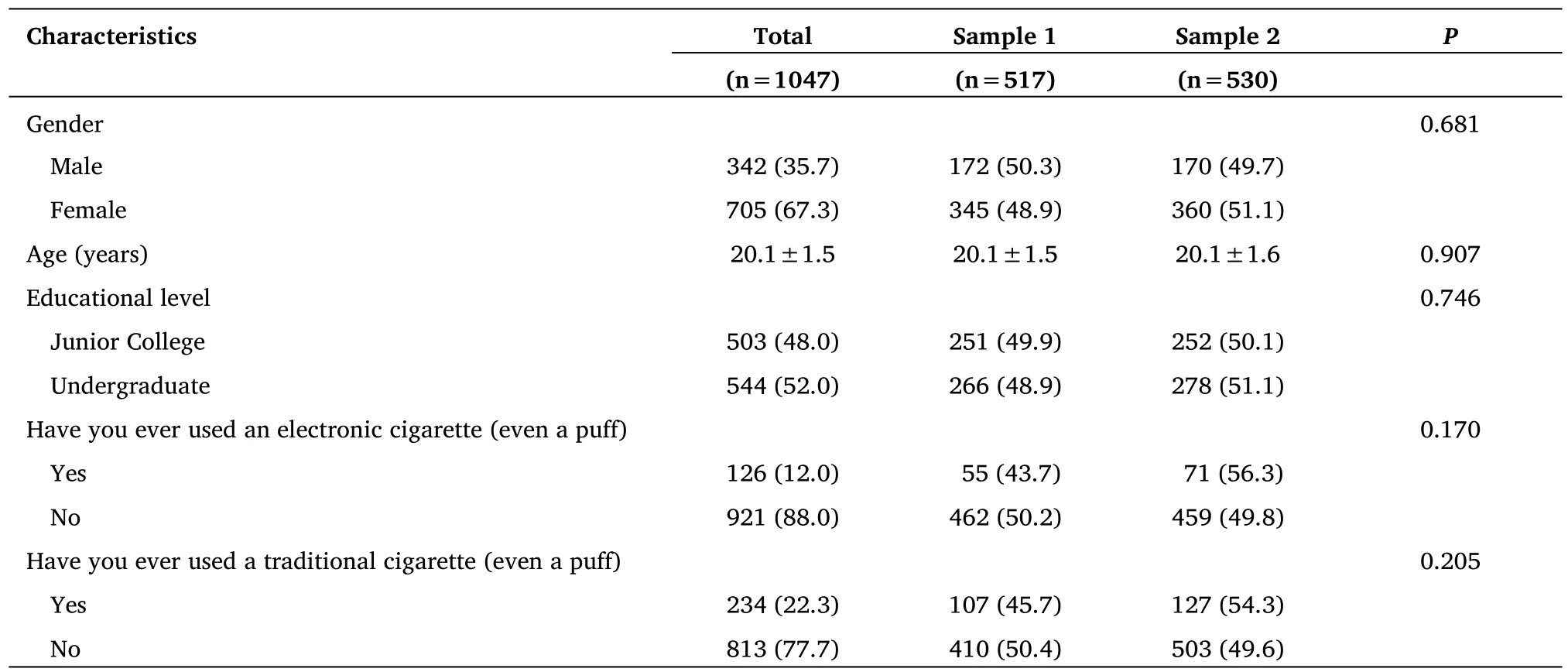
Table 1 The characteristics of participants
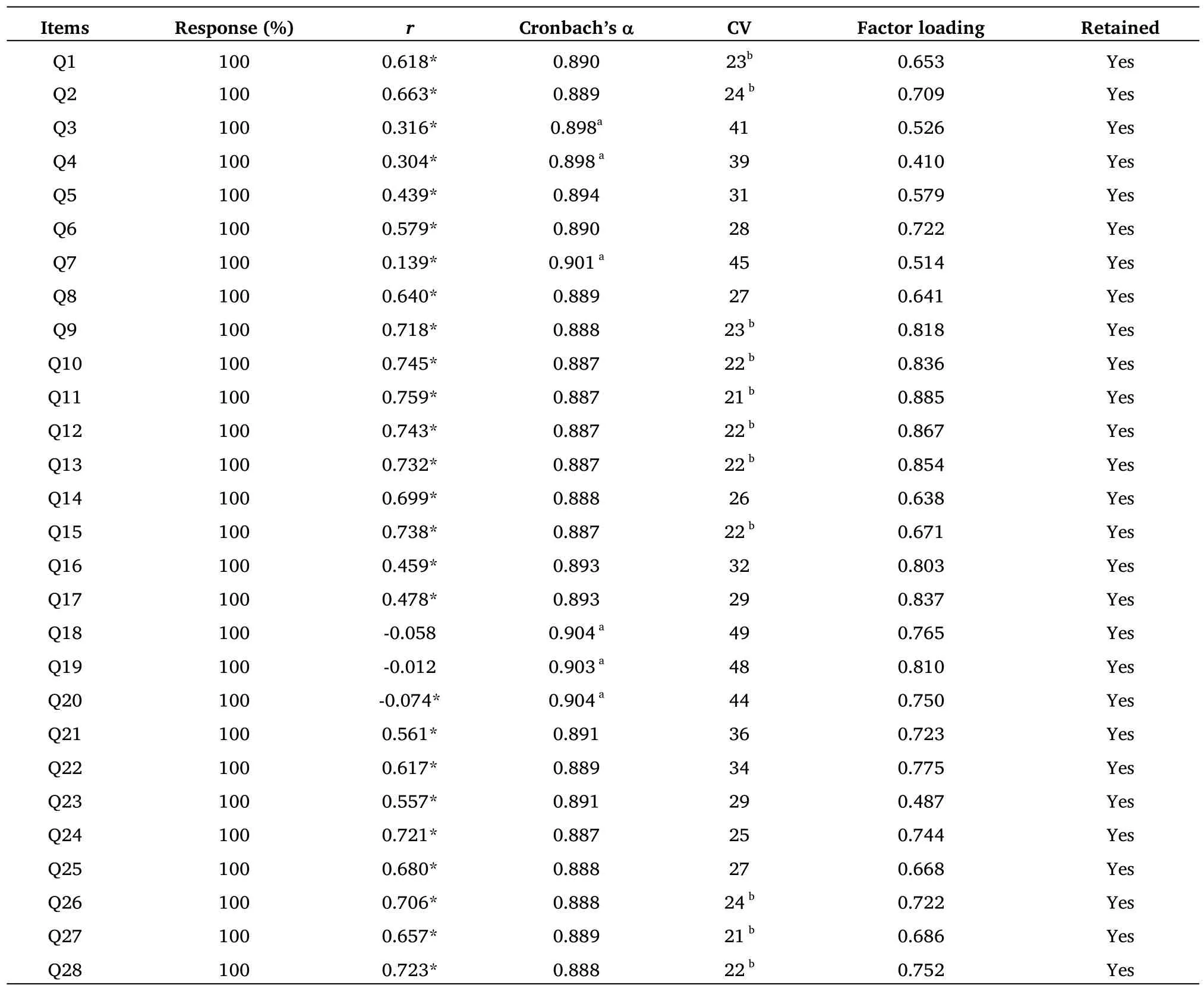
Table 2 Results of item screening(n=1047)
According to the analysis of the results of the above five criterion,there are no items that had been deleted for 3 or more times,so 28 items were retained for EFA.
Exploratory Factor Analysis(EFA)
Sample 1 was skewed distribution.The present study used Unweighted Least Squares method to extract the factorial structure.All items,except item 29,were employed to EFA and Varimax solution as the rotation method.Table 3 showed that the KMO value was larger than 0.60(KMO=0.905)and had a significantP-value(P<0.001)which suggested sample 1 was suitable for the EFA.A total of 6 factors were extracted according to the eigenvalue larger than 1,which explained 72.774% of variance in the model.However,item 7 was considered to be deleted because the factor loading was 0.360.Six factors were extracted by EFA.Factor 1,named self-efficacy,consist of items 8-15.Factor 2,named social environment,consist of items 23-28.Factor 3 included items 1,2,4,5,6,named knowledge.Factor 5 consist of items 3,16,17,named outcome expectation.Factor 4(items 18-20)and factor 6(items 21-22)were considered to merger which named as the sales environment.
Confirmatory factor analysis(CFA)
CFA approach was employed to explore the structure of ECUS except item 7.Sample 2 was skewed distribution,the present study used the robust MLM method to extract the factorial structure.Items 3,4,21 and 22,which had a low standardized factor load(0.134-0.348),were deleted.The results in Figure 1 showed that the model fitted well[χ2/df=2.61;CFI=0.938;TLI=0.928;RMSEA=0.055(0.050,0.061);SRMR=0.046;AIC=34694.405;BIC=35036.235].
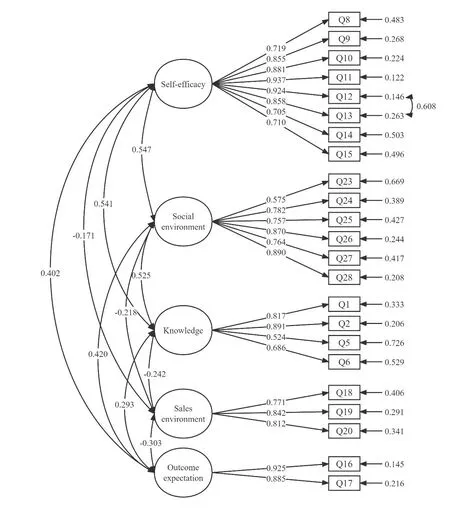
Figure 1 5-factor model obtained from the confirmatory factor analysis based on the 24-item ECUS
Convergent validity
Table 4 showed that the value of AVE and CR of self-efficacy,social environment,knowledge,sales environment and outcome expectation were all in line with the standard,indicating that the convergent validity is good.
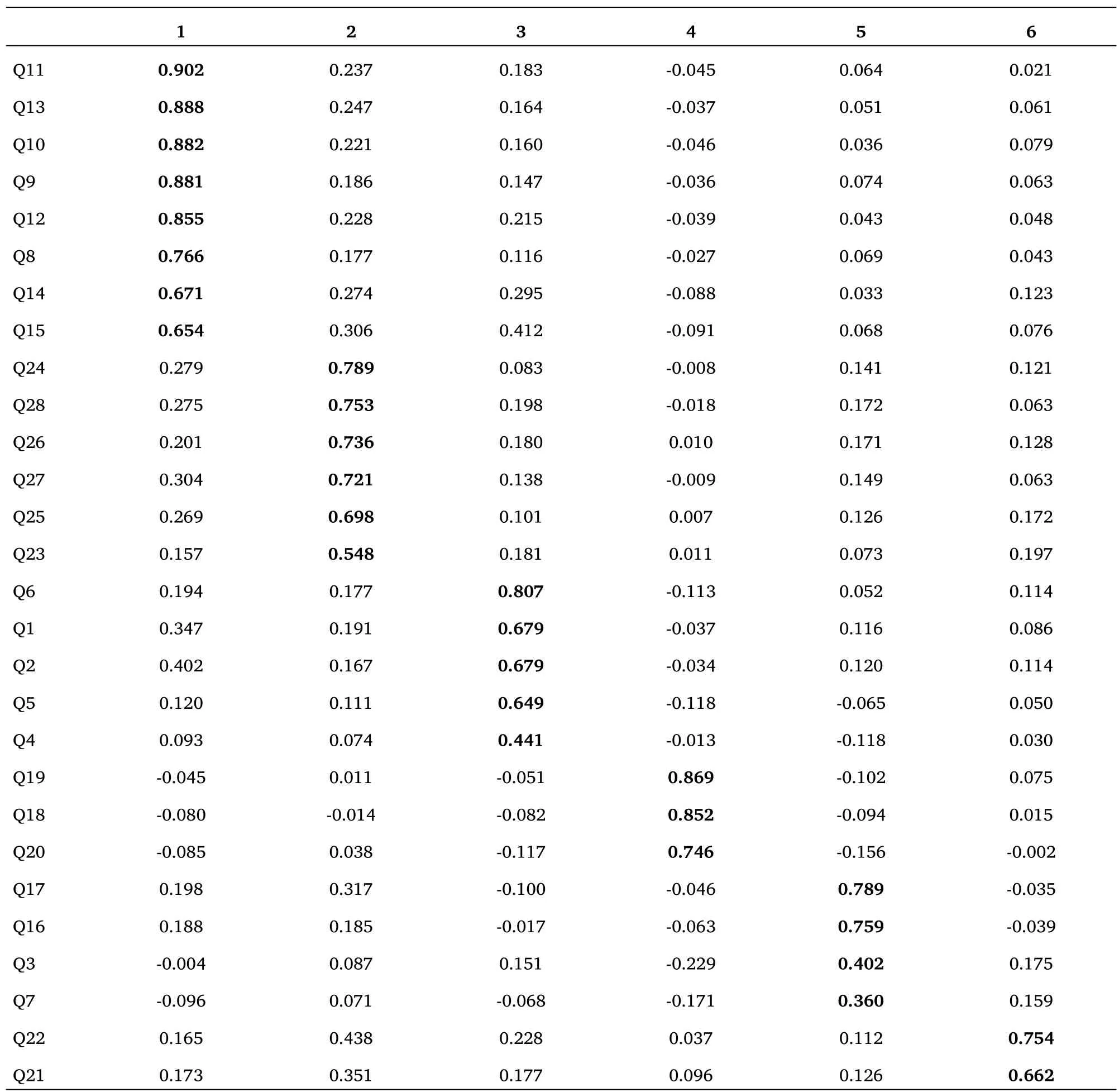
Table 3 Factors loading based on Exploratory Factor Analysis
Discriminant validity
Table 5 showed that the square root of AVE of each dimension of the scale was larger than other correlation coefficients of the factor,indicating that the discriminant validity of the scale was good.
Internal consistency
The internal consistency of the 24-item ECUS was checked,and the results were showed in Table 6.The total Cronbach’s α was 0.898,and the Cronbach’s α of each dimension is between 0.839 and 0.954,indicating a good internal consistency of 24-item ECUS.
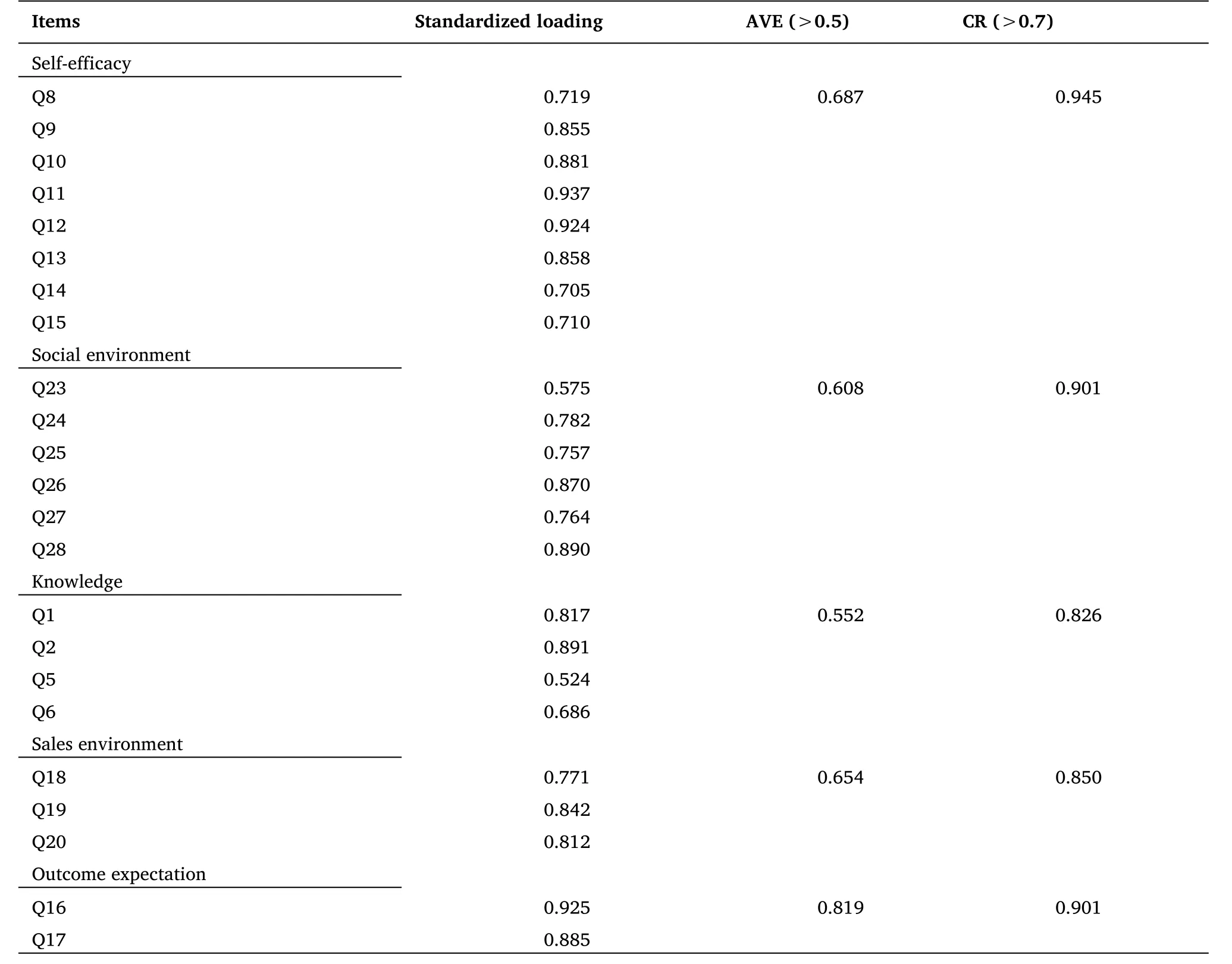
Table 4 The results of convergent validity of 24-item ECUS

Table 5 The results of discriminant validity of 24-item ECUS

Table 6 The results of internal consistency of 24-item ECUS
Discussion
In summary,this study developed the electronic cigarette use scale based on social cognitive theory,which includes 6 dimensions and 24 items.The original items 3,4,21 and 22 were deleted by confirmatory factor analysis.The scale had good reliability and validity and provided an effective evaluation tool for the use of e-cigarettes in the population.
In terms of reliability test of the scale,this study used Cronbach coefficient as an index.It is well known that the Cronbach coefficient increases with the increase of scale items[29].After screening the items,the number of items is reduced from 29 to 24,the total Cronbach’s α is 0.898,and the Cronbach’s α of each dimension is between 0.839 and 0.954,indicating a good internal consistency.
In terms of scale validity,exploratory factor analysis and confirmatory factor analysis were used in this study.A total of 6 factors were extracted by exploratory factor analysis,and the cumulative explained variance was72.774%.The results of confirmatory factor analysis showed that the model fitted well[χ2/df=2.61;CFI=0.938;TLI=0.928;RMSEA=0.055(0.050,0.061);SRMR=0.046;AIC=34694.405;BIC=35036.235].In addition,the convergent validity and discriminant validity of the 24-item scale were good.In summary,24-item ECUS had good reliability and validity.
In addition,according to the results of CFA,our study also found that environmental factors can affect the use of electronic cigarettes through social environment and sales environment,respectively.On the one hand,the social environment mainly refers to the influence of family,friends and social norms on the use of electronic cigarettes.Previous studies have shown that parents,siblings and peers smoking is one of the important risk factors for adolescent smoking[30-33].On the other hand,the sales environment mainly affects the price of electronic cigarettes,the way of purchase and the acceptance.Individuals can get the e-cigarette online,such as Tmall(the largest e-commerce platform in China),and have more misleading information in online sales of e-cigarette[34].This also provides a theoretical basis for the intervention in future.
To our best knowledge,the present study is the first to develop a scale of electronic cigarette use based on social cognitive theory.We selected a number of validity test indicators to prove that the scale we designed has good validity.In addition,this study also found that environmental factors can affect the use of electronic cigarettes through social environment and sales environment.
Study limitations
This study based on a cross-sectional survey online and may pose restrictions on the validity and reliability.However,there are some limitations in this study.First of all,our participants are only college students in Guangdong Province.Secondly,due to the use of convenient sampling,there is a difference in the number of genders in this study.Thirdly,the reliability test only uses the Cronbach coefficient for internal consistency test.We need to expand the scope of the participants,and should include more groups of different social strata as the research object to confirm the usability of the scale.
Conclusion
The present study constructed a 24-item ECUS,including 6 dimensions:knowledge,self-efficacy,social environment,sales environment,outcome expectation and behavior intention.The reliability and validity test meet requirements,and the content is comprehensive,which can be used to evaluate the use of electronic cigarettes among college students in China.In the future,more studies should be conducted based on different populations to confirm the availability of the scale.
Declarations
If you need to use 24-item ECUS(Appendix 1),please contact the correspondence author and obtain authorization before using it.It is required to clearly indicate the 24-item ECUS and hope to share your research results.
 Psychosomatic Medicine Resesrch2022年2期
Psychosomatic Medicine Resesrch2022年2期
- Psychosomatic Medicine Resesrch的其它文章
- Psychological Impact of Chronic Kidney Disease and Hemodialysis:Narrative Review
- Health behaviours and wellbeing of health workers amidst the COVID-19 pandemic
- Discussion on the mechanism of Xiaoyao Powder in the treatment of irritable bowel syndrome based on network pharmacology
- The relationship between physical exercise and subjective well-being in Chinese college students:the mediating role of psychological resilience and the moderating role of peer influence
- Survey and analysis of the current situation of humanistic care ability of first-year nursing students after COVID-19
